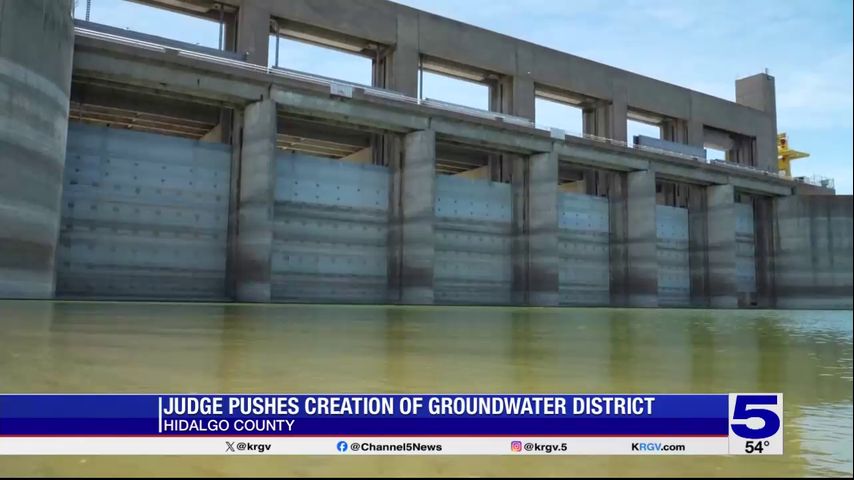Hidalgo County judge pushing for creation of groundwater district
The water supply from the Rio Grande continues lowering.
Water availability in our reservoirs has been dropping for at least the last five years. Hidalgo County Judge Richard Cortez said he wants utilities to look for other sources of water.
“The only alternative source of water that we have are really water in the ocean and water on the ground," Cortez said.
Cortez told Channel 5 News it's time for the area to create a groundwater conservation district, which would regulate how close water wells can be to each other, and how much water they draw.
“The water on the ground is owned by the people that own the surface, so it's not easy to regulate unless you have a groundwater district that would formulate some rules and things of this nature,” Cortez said.
Texas has 98 groundwater districts, many of which do not follow political boundaries.
A groundwater district in the Rio Grande Valley could span over more than one county.
East Rio Hondo Water Supply Corporation General Manager Brian McManus said historic well drilling data shows that there is 40 million acre feet of low salt content water.
“It's a huge quantity of water,” McManus said.
Data also shows there’s 120 million acre feet of "moderately" salty water.
Experts estimate in a year when the Valley has plentiful water available, it uses about one million acre feet per year.
“There is a boatload of water beneath us that can be used, it does take reverse osmosis or some form of desalination,” McManus said.
The East Rio Hondo Water Supply Corporation is one of the few Valley utilities that already draw groundwater. The company also uses a reverse osmosis system to remove the naturally occurring salt and minerals that come with it.
“We believe that it's in the best interest of the public to have public control over that groundwater,” Cortez said. “We don't want the cities that have the most money to have most of the water, and the cities that have less money have less of the water."
If too many well users draw water at once, it could have an unintended consequence.
“If those wells start to get spaced insufficiently, and you have two entities pulling out of the same aquifer, you can more rapidly decrease the water in the aquifer than you anticipated,” McManus said.
The Texas Water Development Board says groundwater conservation districts are created either by the legislature, or by the Texas Commission on Environmental Quality, following a local petition.
Watch the video above for the full story.





